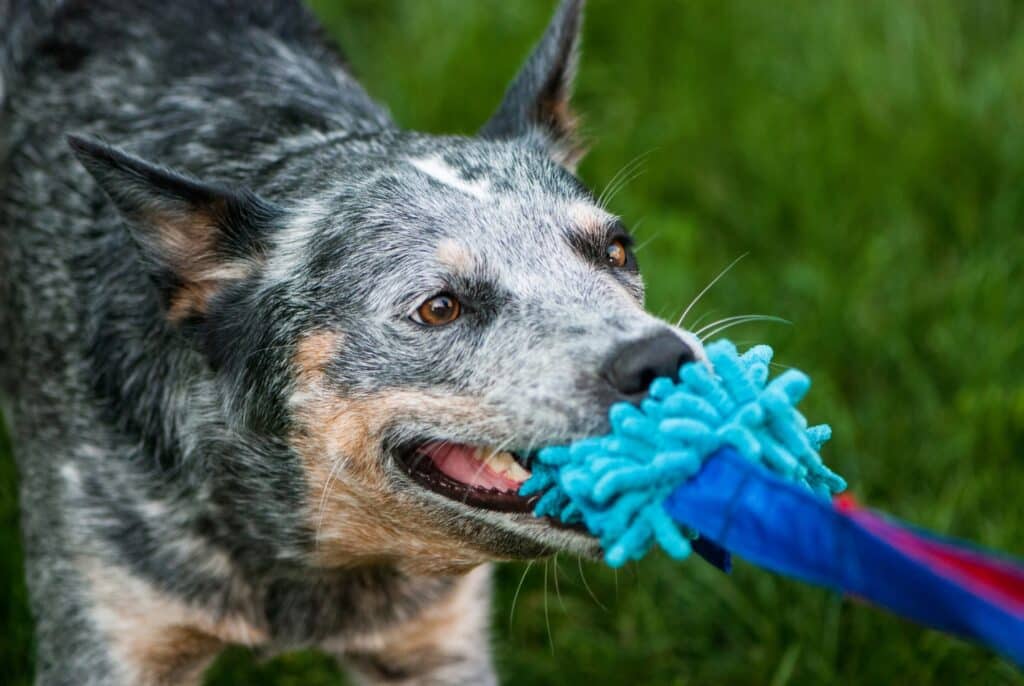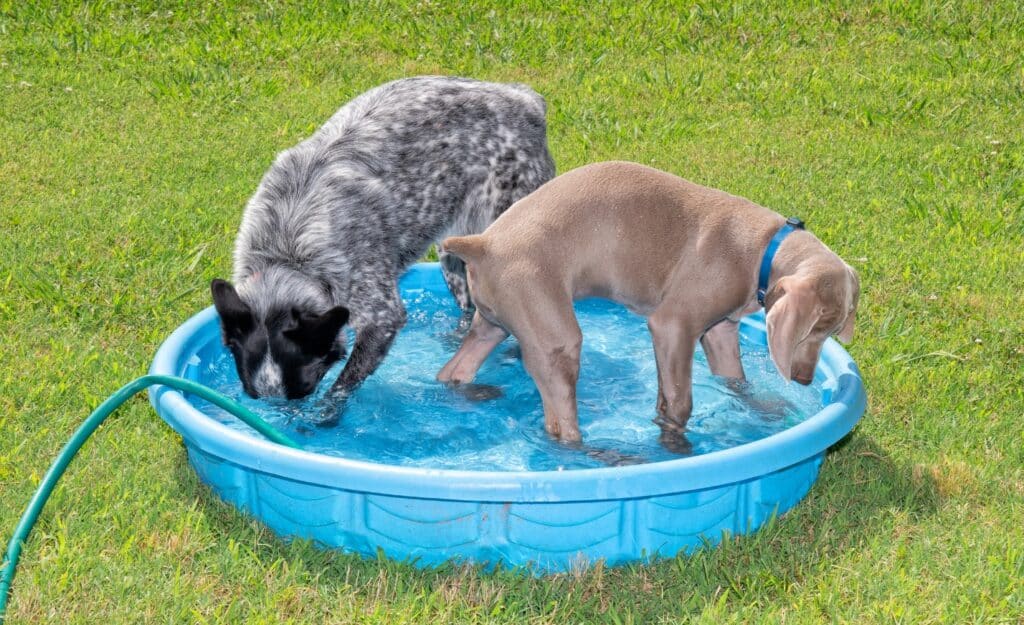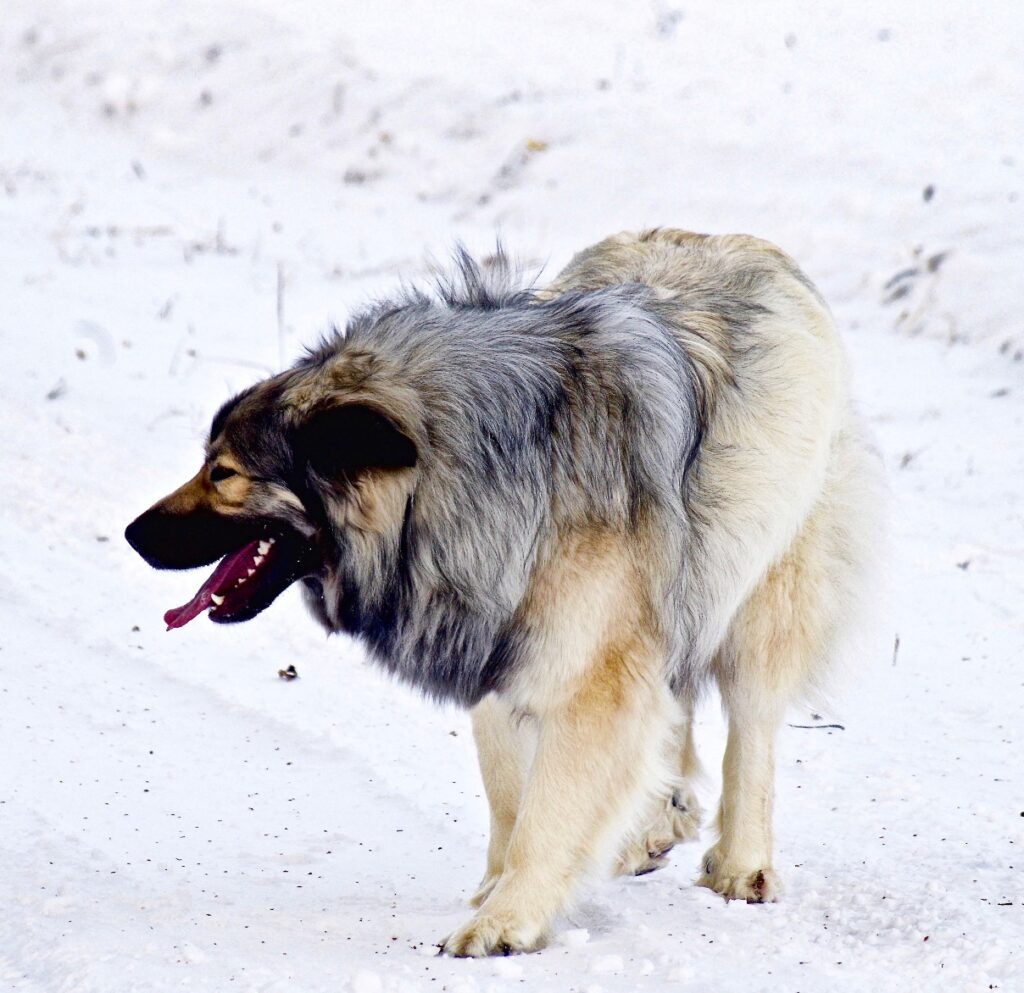If you’re considering adding a Blue Heeler Great Pyrenees mix to your family, you’re in for a treat! This dog is known for being friendly, intelligent, and loyal.
But before you bring one home, there are a few things you should know. In this article, we’ll provide a beginner’s guide to the Blue Heeler Great Pyrenees mix – including tips on training, daily exercise, diet, and taking care of your new pet.
So read on to learn more!
Breeding overview
The Blue Heeler is an Australian cattle dog mix developed in the 1800s to help farmers with dogs for herding and driving cattle. The Australian Cattle Dog is itself a relatively new breed, having been developed in the 19th century from a mixed breed between the Highland Collie and the Dalmatian.
The Pyrenees Blue mix breed is a large, gentle giant of a dog that hails from the mountains of France. It was used for centuries to guard flocks of sheep from predators and as a working dog in the country’s mountainous regions.
These two breeds were combined to create a dog with the best of both worlds – the amazing herding dogs with the protective instincts and athleticism of the Blue Heeler, with the size and protective nature of the Great Pyrenees.
The resulting mixed breed is patient and good-natured with kids and guards well against intruders.
Blue Heeler Great Pyrenees Mix – Characteristics
The Blue Heeler Great Pyrenees mix is a designer dog breed. They’re big, strong, and athletic. They stand out because they’re so big, powerful, and strong.
They are well-muscled and have a muscular build. Their thick and dense white coats protect them from the elements.
They have a long snout and a deep chest. Their head is large, and their ears are pointy.
The head is typically shaped like a blunt wedge, with erect ears that sit high on the head. Their coat colors are versatile and come in shades of dark browns, reds, blues, blacks, and greys.
They have strong and muscular bodies and a long tail that they love to wag. They have dark eyes that are boundless energy and city life.
Blue Heeler Great Pyrenees’ double coat is thick and dense, with a water-resistant outer layer that helps protect against the elements.
You may also like – Pyrenees Border Collie Mix – All you need to know!
What’s their Demeanor like?
The Blue Heeler is a large, imposing dog with a reputation for being aggressive. However, while they may be naturally protective of their family and home, they are not inherently aggressive.
“The Blue Heeler Great Pyrenees can be gentle, loving companions with proper socialization and proper training. They are intelligent dogs who excel at obedience training.”
Their natural herding instincts make them excellent working dogs. They are also loyal and devoted to their family, making them beautiful additions to any home.
What are their training Needs?

Training for the Blue Heeler Great Pyrenees requires some effort, but it can be an enjoyable activity for both the person and the dog. Follow these few simple steps to ensure success.
- If you train your new puppy, it’s best to start early so that he or she can learn what is expected of them in the home environment.
- To do this, make sure that you have plenty of time to spend with the dog and have them on a regular schedule for feeding, walking, playing, and sleeping.
- It’ll allow them to know what is expected from them and how they should act around other people or pets.
- Be consistent! If you don’t give your dog positive reinforcement every time he does something right, he won’t do it again.
- Reward him when he does what you want! Give treats or praise whenever he obeys commands like sit, stands, stay, and others.
- You can use treats or food rewards for good behavior and games for bad behavior, like chewing on furniture or shoes.
- Keeping your pup busy is one of the best ways to prevent behavioral issues.
Are they Aggressive?
The blue heeler is an ancient cattle herding dog breed that was bred to herd dangerous and fast-moving beasts fearlessly. Sometimes a dog will be born with an inherited tendency to become aggressive.
But it’s not always the case. With no control over their tendency, it can develop into dominance towards fellow dogs or even aggressive behavior toward humans if left unchecked by a strong leader in its pack.
On the other hand, the Great Pyrenees are not typically aggressive. However, if they are mishandled or not given the appropriate training, they can show signs of aggression towards others.
The Blue Heeler Pyrenees mix is likely to display aspects of both parent breeds, in which occasional aggression will occur in certain situations.
They will be fiercely loyal and protective and require early training and socialization to manage their temperament.
What’s their Exercise Needs?

When it comes to plenty of exercises, this is definitely a breed that needs plenty of it. Both parent dogs are working dogs by nature. So it’s no surprise that their offspring would inherit this trait.
- A minimum of 1-1.5 hours of regular exercise per day is recommended, but more is always better to keep your Blue Heeler Great Pyrenees mix happy and healthy.
- A long walk or run will suffice, but they’ll also enjoy playing fetch or tug-of-war.
Provide them access to a fenced-in yard where they can run and explore to their heart’s content.
Mental Stimulation

The Blue Heeler Great Pyrenees mix is a powerful and compact herding dog known for its loyalty, intelligence, and trainability. Like all breeds, the Blue Heeler needs regular physical activity and mental stimulation to stay joyful and healthy.
The good news is that both the Blue Heeler and the Great Pyrenees are intelligent and energetic breeds that enjoy a good challenge. To provide your dog with the mental stimulation they need, consider adding some of the following activities to their daily routine:
- Interactive toys, like Kongs or puzzle feeders
- Brain games, like hide-and-seek or fetch
- Training sessions, both formal and informal
- They enjoy mentally stimulating activities such as puzzle toys, nose work, and obedience training.
Blue Heeler Great Pyrenees – How to Groom them?
The Blue Heeler Great Pyrenees mix is a beautiful and unique dog breed. They are relatively easy to groom, but you should keep a few things in mind.
Here, we’ll review tips on grooming your Blue Heeler Great Pyrenees mix.
Brushing
The first step in grooming your Blue Heeler Great Pyrenees mix is to brush its coat. It’ll help remove any dirt, debris, or tangles that may be present.
It’s best to use a wide-toothed comb or a shedding blade to avoid harming the dog’s skin. Brush in the direction of hair growth, and pay special attention to the areas around the ears, neck, and legs.
Bathing
Bathing your Blue Heeler Great Pyrenees mix should only be done when necessary. Overbathing can strip the natural oils from their coat, leading to dryness and irritation.
When bathing them, use a mild dog shampoo and rinse thoroughly. Avoid getting water in their ears, and be sure to towel-dry them afterward to prevent chilling.
Nail Trimming
Another important part of grooming your Blue Heeler Great Pyrenees is nail trimming. It should be done every week or as needed.
If you’re not comfortable trimming your dog’s nails, you can take them to a groomer or vet to have it done.
Ear Cleaning
Lastly, don’t forget to clean your dog’s ears regularly. It helps prevent infection and keeps them free of wax buildup.
Simply use a cotton ball or soft cloth dampened with warm water to wipe the inside of their ears. Be sure to go slowly and carefully, not insert anything into the ear canal.
Are they Dog Friendly?

The Blue Heeler Great Pyrenees Mix is recognized as a serious, quiet, well-behaved family dog devoted to his family and well-mannered children. In most situations, these dogs are reliable, loving, and mild-mannered, yet they will fight to defend their pack and home if threatened.
Are they Child Friendly?
The Blue Heeler Great Pyrenees was developed by breeding two distinct canine species, the Blue Heeler and the Great Pyrenees.
Both breeds are considered to be loyal, intelligent, and protective. Both parent breeds are known to be loyal, intelligent, and protective.
It’s no surprise that a Blue Heelers Great Pyrenees mix makes for a wonderful companion family pet. They’re not only smart and loyal, but they’re also good with kids.
“Many families choose to adopt a Blue Heeler Great Pyrenees mix specifically because they are looking for a child-friendly breed.”
Drooling levels
Drooling can affect many factors, including size, health issues/conditions, thirst, and dry dog foods. Those levels are;
- Low: This crossbreed is not a heavy drooler. You may see some drool when playing or working hard, but overall they don’t produce a lot of saliva.
- Medium: They may drool more than the low drooling type, but it’s still manageable. They will leave a few drool stains on your clothes or furniture, but it’s nothing compared to the high drooling type.
- High: This level is related to a heavy drooler. They may drool all over your clothes and furniture, and you may even find puddles of saliva around their quality dog food bowl. Be prepared to have a drool rag handy at all times!
“Larger jowls, looser mouth skin, and shorter noses contribute to the extreme drooling in gigantic breeds.”
The Blue Heeler Great Pyrenees mix is considered a medium drooler, which means their drooling is quite evident at times but can be managed.
Barking Levels?
We’ve all heard that “a dog is a man’s best friend.” But what about when your best friend is driving you crazy with their incessant barking?
Even though they don’t make a lot of noise when they bark, the Blue Heeler Great Pyrenees is quite protective of the house.
Their suspicious nature will result in some barking. This, in conjunction with their physical characteristics, make them great security dogs.
Adaptability to Weather

The Blue Heeler Great Pyrenees is not a breed for hot weather. They thrive in cold environments and can handle freezing temperatures just fine, even below zero degrees/Fahrenheit outside!
The double coat that they have on their body protects the windy skies as well as rain or snowfall. So, you don’t need to worry about your pup shivering when left alone at home during these harsh winter months.
How long do they live?
The average lifespan for this wonderful breed is 10 to 14 years and sometimes 16 years, too. But it can be as long or even longer depending on several factors including:
- Nutrition (Diet)
- veterinary care
- Happy and Healthy Lifestyle
- Timely and Regular Vaccinations, etc.
AKC Recognition
The American Kennel Club first recognized the Blue Heeler in 1980 and the Great Pyrenees in 1933.
“The Blue Heeler Great Pyrenees Mix is yet to be registered by the AKC; however, this may change in the future.“
Cost to Purchase
These dogs are not for everyone! Reputable breeders usually charge around $800 to $1,000, though the price can vary quite a bit.
These larger breeds require more work than other types and may be difficult if you have limited time or expertise with breeding animals (due to their hyperactivity).
Final Thoughts
The Blue Heeler Pyrenees mix is an excellent choice for those who want a loyal and protective companion. They’re versatile enough to be trained in many different ways.
This mix combines the best of both breeds with the intelligence and obedience of the Labrador Retriever and the strength and protectiveness of the Great Pyrenees.
If you’re looking for a loyal protective furry friend to keep you safe, this may be the perfect breed for you!
You may also like – The Ultimate Great Pyrenees Guide – All Questions Answered!

